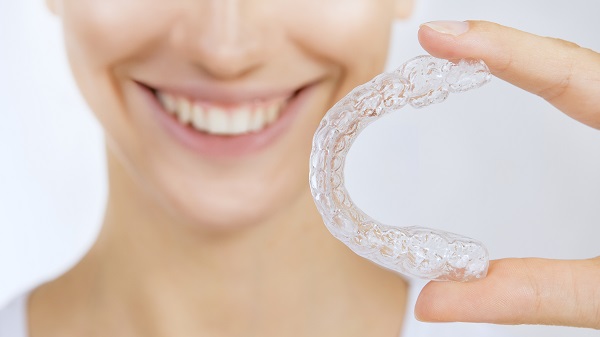5 Things to Know Before Getting Invisalign®

Invisalign® is an orthodontic system made up of a series of clear plastic shells that fit tightly around the teeth. This treatment is a process of wearing these clear and removable aligners, which gradually straighten your teeth. Unlike traditional braces, there are no brackets and wires. These are made of flexible plastic, specifically, a patented thermoplastic material called SmartTrack created exclusively for Invisalign treatment.
Why get Invisalign®?
There are many reasons you should get Invisalign®. Using wired metal braces might eat on your confidence since everybody knows that you are straightening your teeth, but as Invisalign is smooth and almost invisible, it will not affect your daily life. With Invisalign aligners, you can eat whatever you want, but with traditional wired braces, there are some restrictions. You cannot eat any food that is hard to chew.
Invisalign is removable, so you can easily remove and clean them with some lukewarm water. Traditional braces tear up the tissue of the cheeks and lips and cause lots of pain. But Invisalign doesn't use the method of pressure like braces; instead, the plastic trays are designed to reduce the pain and straighten the teeth.
5 things to know about Invisalign®
1. Invisalign takes commitment
Before you try Invisalign, make sure that you don't have any time commitment issues, because Invisalign is a process. The entire treatment takes about nine to fifteen months. You have to wear your aligners for about 20 to 22 hours daily. You must be dedicated to the whole process from start to finish.
2. You may have to change your eating habits
You can enjoy all foods. However, you may have to readjust your eating habits. The most important thing is that you cannot eat or drink with Invisalign in our mouth. You can drink water, but coffee, tea, soda, juices, etc. can stain and discolor your invisible aligners. Also, they can become infected with bacteria and smell stinky. Thus, it is better to avoid those foods and drinks as long as you are being treated.
3. There will be some discomfort
You will feel discomfort and some pressure when you start wearing Invisalign aligners. You should remember that if you don't feel anything, then your aligners perhaps might not be working as intended.
4. You must follow the guidelines for wear and care
You have to follow the rules of wearing these aligners. There are dos and don’ts. You should always remember that the aligners should be cleaned daily after taking them from your mouth and before putting them back in your mouth.
5. Invisalign can't correct all bite issues
Even crooked teeth, crossbites, gaps, overcrowding, underbites and overbites can be fixed with Invisalign treatment, but with some patients, it can’t correct specific bite issues. If Invisalign does not work for you, doctors can determine other options after examination and X-rays of your teeth and discuss other treatments that may work well for you.
The bottom line
Now that you know some important things about Invisalign, you should be able to make a more informed decision. If you are considering Invisalign, be sure to ask your dentist or orthodontist any questions you may have to find out if it is right for you.
Request an appointment here: https://www.drkhorsand.com or call Khorsand Dental Group at (760) 394-3082 for an appointment in our El Centro office.
Check out what others are saying about our Invisalign® services on Yelp: Read our Yelp reviews.
Related Posts
Clear braces are becoming more common among patients of all ages. In past years, orthodontists chose traditional metal braces to straighten crooked teeth. However, there are advantages to using clear options instead. If you do not want your orthodontic treatment to hinder your smile, you should not have to worry. Repair your teeth without anyone…
If you have ever had a dental crown placed, you know that the process often involves multiple visits and temporary crowns. A CEREC dentist offers a faster solution to the typical dental crown process. Using advanced technology, these dentists create durable, high-quality crowns in just one appointment.A CEREC dentist uses Computer-Aided Design and Manufacturing (CAD/CAM)…
There are many options that you can consider when looking at partial dentures. They can come in several different materials and varieties. Let us take a look at each one, taking both the pros and the cons into account.Acrylic dentures are probably the most commonly used variety. There are several benefits to them. First, they…
Oral surgery is a broad term that covers a wide variety of procedures related to teeth and gums. There are a number of reasons dentists may recommend dental surgery for a patient. Most often, they do so if the pain or discomfort a patient is feeling or an injury or infection goes deep enough into…
